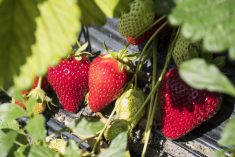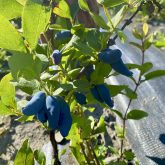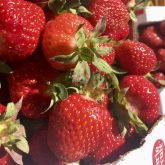The rain that threatened to douse attendees of the Prairie Fruit Growers farm tour June 5 was good news for the people growing the fruit.
“The recent rains have actually been OK,” said Prairie Fruit Growers Association executive director Angie Cormier. “Fruit trees, strawberries, they all like water.”
Conditions are shaping up well for members, she said. Saskatoons and haskaps are fruiting and strawberries are beginning to blossom. Cormier herself runs a strawberry farm, Cormier’s Berry Patch, near LaSalle, south of Winnipeg.
Read Also

Manitoba data in on Maizex canola hybrids
Maizex Seeds has two new canola hybrids for western Canadian farmers to plant for the 2026 crop. The latest Manitoba trial data is in on the new varieties.
Why it matters: Conditions during the blooming period are key to Manitoba’s fruit harvests.
The June 5 tour visited two farms. Futura Farms, operated by Carl Durand, is a commercial fruit operation and Gibson Farm is a U-pick operation north of Beausejour run by Everett Gibson. The tour is a networking opportunity for PFGA members.
“Everybody is always wanting to see what everybody else is doing on their operation,” said Cormier. “We are very spread out in the province, so we don’t always get the opportunity to be together. This is a great way for growers to be together to see what other people are doing.”
Futura Farms
Durand started Futura Farms in 2019. He grew up near Portage la Prairie, working on his father’s tree farm.
As an adult, he worked outside the province in a non-agricultural field for a decade before moving back to Manitoba. He bought his farm’s 38-acre property in April 2019.
Durand farms around 10 of his acres and the rest is rented out for grain or covered by bush.
His fruit farm began as a wholesale seed business that supplied commercial growers with seed to grow apple rootstock.
Manitoba was a good place for such a business. The rootstock of hardy Manitoba trees is coveted by growers in warmer regions. A desirable fruit cultivar, for example, can be grafted to a Manitoba crab apple tree root system naturally adapted for Prairie winters, thus making the tree more resilient to bad weather.
“If you go to a tree nursery and buy any tree cultivar, almost all of them are grafted onto some hardy root stock,” said Durand.
When the end product is seed and rootstock, however, the fruit is wasted.
“I got the idea to start using this waste product as something to sell itself,” said Durand. “Since then, I’ve expanded into not just the fruits that I grow for seed but also other fruits that grow strictly just for the wholesale fruit.”
Gibson Farm
Everett Gibson didn’t grow up on a farm but his father came from a farm in Saskatchewan’s Qu’Appelle Valley.
Gibson served in the Canadian military until 2016. Once discharged, he and his father began talking about farming.
“We wanted to get a rural property and we started watching videos about market gardening,” said Gibson. “We just happened upon this place and we fell in love with it. It was a berry orchard, but we’ve been trying many different things here.”
They weren’t looking specifically for a fruit farm, but did want a commodity that would let them direct market. Gibson tried his hand at pastured poultry but that facet of the business is now taking a back seat.
“I really wanted to focus on berry production this year. The pasture poultry took a lot of my time in the spring. So, I’ve focused more on the berries this year, but I do still have chickens. I have hens for laying eggs.”
The property spans 110 acres, most of which is forage land. Only about three acres are dedicated to fruit.
Business picked up on the Gibson Farm last year, but the first few years were hard going, the farmer noted. The U-pick was open, but heat and dry weather diminished berry crops. In 2023 , Gibson established a website.
”I started advertising on Facebook and in the local newspaper here. I really saw a jump in people.”
He operates his farm with a goal of good stewardship and defines that as limiting chemical use and purposefully courting biodiversity.
Instead of a monocrop, he’s “trying to get a lot of diversity and fruit crops in order to attract beneficial insects. I’m getting cattle in here to graze the pasture just to make it a really closed-loop ecosystem.”
















